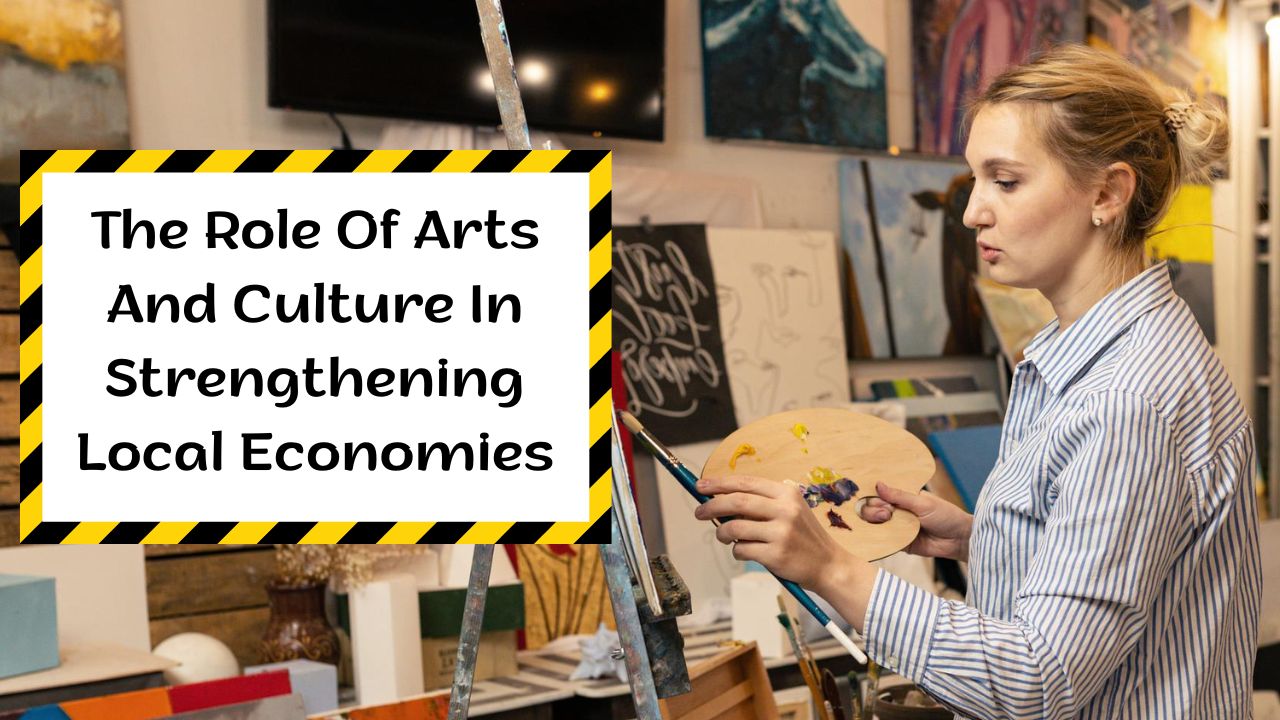Arts and culture are more than creative expression — they are a powerful economic engine that drives employment, tourism, investment, and community identity.
Across cities and towns, creative industries are rejuvenating downtowns, attracting small businesses, and helping local economies diversify.
According to recent national data, the arts and cultural sector contributes over $1.1 trillion annually to the U.S. economy, representing around 4.2% of the GDP.
From large cultural hubs like New York and Chicago to smaller communities across Kansas, Oregon, and North Carolina, public art programs, music festivals, theaters, and museums create a ripple effect of economic activity.
Local governments and private investors now recognize culture as an essential part of sustainable economic planning.
The Economic Power of Arts and Culture
1. National and Local Impact
The creative sector encompasses industries such as film, design, performing arts, heritage, publishing, and digital media.
It employs more than 5 million Americans directly and indirectly supports millions more through secondary industries like hospitality, retail, and transportation.
Cultural events encourage visitor spending in local restaurants, hotels, and shops. Every ticket sold to a play or concert generates additional revenue in nearby businesses.
On average, an arts attendee spends around $30 per event beyond the admission price — multiplying economic activity in surrounding areas.
Key Statistics
| Metric | 2025 Estimate | Impact |
|---|---|---|
| U.S. Arts & Culture GDP Contribution | $1.17 Trillion | 4.2% of total GDP |
| Jobs Supported | 2.6 Million+ | From creative to service sectors |
| Annual Cultural Tourism Revenue | $192 Billion | Includes lodging, dining, retail |
| Average Local Spending Per Visitor | $30–$35 | Restaurants, transport, shopping |
| Average Tax Revenue Generated | $29 Billion+ | Supports city/state budgets |
How Arts and Culture Strengthen Local Economies
1. Job Creation and Local Employment
Every art exhibit, gallery, or concert generates employment — from performers to technicians, curators, and vendors. The ripple effect of creative jobs extends into construction, hospitality, and tourism.
Even small cultural districts can sustain hundreds of stable jobs, helping communities transition from industrial to creative economies.
2. Revitalization of Downtowns and Historic Areas
Public art installations and cultural venues often anchor downtown redevelopment. Old warehouses turned into galleries, music halls, or art markets breathe new life into previously neglected neighborhoods.
Examples include Kansas City’s Crossroads Arts District and Asheville’s River Arts District, which have transformed into thriving hubs of local business and tourism.
3. Boosting Small Businesses and Entrepreneurship
Cultural activity attracts foot traffic, providing essential customers for cafes, boutiques, and independent stores.
Artists often partner with small business owners for exhibitions, pop-ups, and seasonal festivals. As creativity attracts attention, local enterprises benefit from higher visibility and increased consumer spending.
4. Enhancing Tourism and City Branding
Tourists increasingly seek authentic cultural experiences — local crafts, live music, art trails, and historic districts. Cities with strong cultural reputations draw both domestic and international travelers, extending visitor stays and generating hotel and restaurant revenue.
States that promote cultural tourism report 20–30% higher tourist spending than those that focus solely on natural attractions.
5. Fostering Innovation and Talent Retention
Vibrant cultural environments attract creative professionals and entrepreneurs. Young workers increasingly prioritize livability, community engagement, and cultural opportunities when choosing where to live.
Cities that invest in creative spaces and cultural programs retain talent and attract remote professionals seeking quality of life.
6. Promoting Social Cohesion and Community Well-Being
Arts programs build social connections and give residents pride in their communities. Public performances, murals, and art fairs provide shared spaces that enhance communication and inclusion.
This sense of identity helps neighborhoods remain resilient, particularly during economic downturns.
The Multiplier Effect
Cultural spending has a multiplier effect — each dollar spent on an art event circulates multiple times in the economy. For example, a local theater production generates not only ticket sales but also income for lighting suppliers, taxi drivers, restaurants, and nearby shops.
Studies show that for every $1 invested in the arts, communities can expect up to $4–$6 in economic return through indirect activity.
This multiplier makes culture one of the most efficient and sustainable investments in economic recovery and local development.
Real-World Examples
- Kansas City, Missouri: The Crossroads Arts District transformed a once-declining area into a creative hotspot, hosting more than 400 galleries, studios, and shops. Monthly art walks now attract thousands, driving restaurant and retail growth.
- Santa Fe, New Mexico: Known for its art markets and festivals, Santa Fe’s creative economy generates nearly 15% of its total GDP, supporting thousands of jobs in the arts and tourism sectors.
- Asheville, North Carolina: The city’s music and arts scene contributes over $1 billion annually to the local economy, boosting downtown occupancy and property values.
Strategies for Communities to Leverage Arts and Culture
- Public-Private Partnerships: Cities can collaborate with local organizations and artists to restore historical sites and convert them into community arts centers.
- Cultural Grants and Micro-Funding: Small, targeted investments in art projects can stimulate large-scale engagement and local pride.
- Integrated City Planning: Include creative districts, performance spaces, and cultural trails in urban development plans.
- Marketing and Branding: Promote local artists and events as part of tourism campaigns to enhance regional identity.
- Education and Workforce Development: Incorporate arts education in schools and community programs to build future creative talent.
The arts and culture sector is a cornerstone of economic vitality and community resilience.
Far from being an optional investment, culture acts as a multiplier for growth, supporting millions of jobs, generating billions in revenue, and strengthening the social fabric of communities.
Cities and towns that prioritize creativity reap tangible rewards: revived main streets, thriving small businesses, and enhanced tourism appeal. By integrating arts and culture into their economic strategies, communities can ensure long-term prosperity, inclusivity, and identity.
FAQs
How do arts and culture contribute to local job creation?
Arts create direct jobs for artists, performers, and event staff while indirectly supporting industries like hospitality, transport, and retail through related spending.
What types of businesses benefit most from local arts programs?
Restaurants, cafes, retail shops, hotels, and transportation services often see the highest gains during art festivals, exhibitions, and concerts.
Why should small towns invest in arts and culture?
Small towns gain visibility, community pride, and tourism dollars. Arts programs often serve as a catalyst for revitalization, attracting visitors and new residents.

